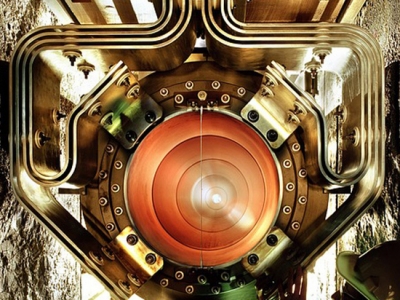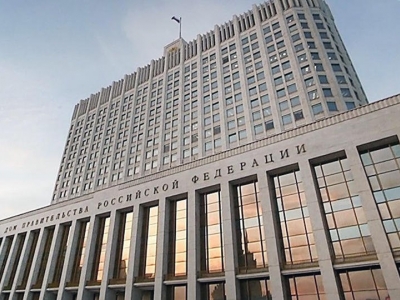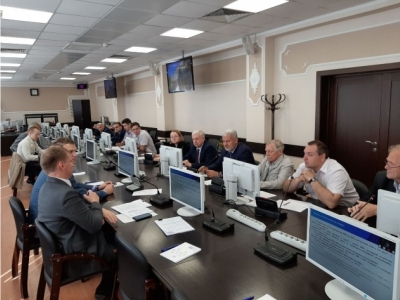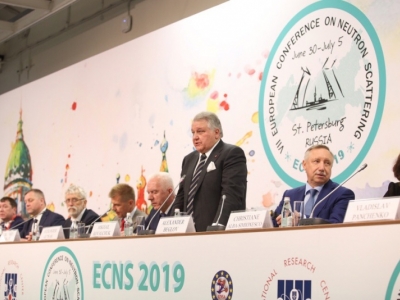Russian scientists proposed to launch a neutrino beam from the Moscow region to the Mediterranean Sea

Physicists of the NRC "Kurchatov Institute" together with foreign colleagues developed a draft of a new experiment at the U-70 accelerator facility in Protvino. Scientists have proposed to create a beam of neutrinos - "elusive" elementary particles - and run it to the giant underwater detector ORCA, which is being built in the Mediterranean Sea at a depth of about 2.4 km. The neutrino beam will pass through the bowels of the Earth of 2.6 thousand km, which are record for such experements, until being "caught" and investigated by the detector. The results of the study will allow us to learn more about the properties of neutrinos and answer many questions about the structure of the Universe, in particular, explain why the matter around us dominates antimatter. The study was published on the portal of preprints arXiv.org.
Neutrinos are uncharged fundamental particles with a negligible, and still not measured, mass. They are born in the depths of space and permeate our planet. These particles interact very weakly with matter, and, as a result, are difficult to register.
At the moment, there are three known types of neutrinos, which have an amazing property of "reincarnating" into each other, or, as physicists say, oscillating when flying through space and in matter. The study of such oscillations allows us to learn more about the properties of neutrinos and to answer many questions about the structure of the Universe.
In order to fill the gaps in knowledge about neutrinos, physicists of NRC "Kurchatov Institute" together with their foreign colleagues developed a plan for the P2O experiment (Protvino-to-ORCA) at the U-70 accelerator facility in Protvino, Moscow Region. Scientists have proposed to create a neutrino beam and launch it to the 8-megaton underwater detector ORCA, which is being built in the Mediterranea Sea at a depth of about 2.4 km, 40 km from the coast of Toulon (France). Neutrino particles with an energy of about 5 GeV will fly through the bowels of the Earth almost 2.6 thousand km, until they are "caught" and investigated by the detector.
It is assumed that the interaction of neutrinos with oxygen and hydrogen nuclei will produce charged particles, which will be registered by underwater photomultipliers. To improve the sensitivity of measurements, the researchers proposed to increase the power of the particle accelerator up to 90 kW, and in the future up to 450 kW. The upgraded accelerator will be able to generate more powerful neutrino beams.
The results of the experiment will allow to answer many questions about the structure of our world. For example, researchers expect to explain the phenomenon of baryon asymmetry of the Universe - the predominance of matter over antimatter in the visible part of the Universe.
"Neutrino research today constitutes is the key area of particle physics. The properties of neutrinos, which are insignificant masses, oscillations, cannot be explained in the framework of the modern theory and require new approaches. Neutrinos, apparently, had a significant influence on the formation of the large-scale structure of the Universe and its observable baryon asymmetry. Although we see that particles and antiparticles are born on accelerators the same way, but the matter prevails in the Universe of antimatter. The answer may be associated with the violation of the fundamental symmetries in weak interactions, where neutrino participates, and the experimental study of this problem is central to the proposed P2O project," — comments one of the authors of the project, Deputy Director of the NRC "Kurchatov Institute" for basic research, Doctor of Physical and Mathematical Sciences Mikhail Skorokhvatov.
It is worth mentioning that currently there are several similar studies of neutrinos in the world. Thus, in T2K experiments in Japan and NOvA in the USA, neutrino beams are sent at a distance of 295 km and 810 km respectively. According to Mr. Skorokhvatov's comments, a key project in this area is considered to be the experiment in USA at Fermi National Accelerator Laboratory (Chicago), which is planned for the end of the 2020s and is under development now. It is assumed that the neutrino beam from the Fermilab will be sent at a distance of 1.3 thousand km to an underground detector in South Dakota.
Mr. Skorokhvatov noted that the restoration of the neutrino channel at the U-70 accelerator will give new impetus to research on the domestic experimental base. The implementation of such an experiment, according his view, will allow to develop a world-class infrastructure in Russia for conducting studies with neutrino beams that can compete with the best experimental complexes of the United States and Japan.
"The development of the proposed ideas will significantly strengthen and deepen international cooperation with European research centers. Moreover, within the framework of this cooperation, Russia will be able to take a leading position, since in the coming years (and most likely decades) the neutrino channel at the U-70 accelerator may be the only one in Europe," — stressed Mr. Skorokhvatov.
Source (in Russian): http://www.nrcki.ru/






